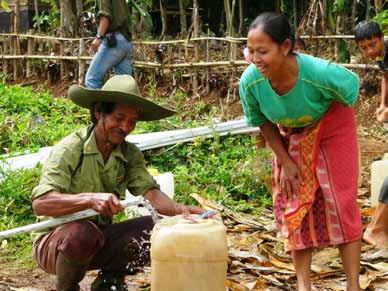
1 minute read
A Green Wall to Catch Fresh Water in Indonesia
from Land for Life
indoneSia
The Gedepahala landscape in the West Java Province of Indonesia includes a network of mountainous water catchments that provide water to more than 30 million people in the Greater Jakarta metropolitan area. But water springs in the region have disappeared, as forest cover in the upper streams was lost to the conversion of land to smallholder agriculture and an increase in human activity.
Advertisement
Since 2008, Conservation International (CI) has led a collaborative, community-based sustainable land management initiative to create a “green wall” of native trees to restore the landscape. More than 100,000 trees have been planted on more than 200 hectares, with the active collaboration of 644 local community members and 20 park rangers. There are new efforts to restore another 100 hectares as a corridor between the natural forest site and the initial restoration block. This would restore a 300 hectare buffer zone in the degraded area and connect the natural forest to the existing forest block.
In addition to using participatory approaches to involve the communities, there are incentives to strengthen the project’s long-term survival, particularly because the land users are often tenants, not the owners. Participants who practice agroforestry—planting and tending the trees on their farms—get assistance in growing food crops. They are also given training on sustainable land cultivation, soil retention and regeneration, and are encouraged to add other income-generating activities like fisheries and livestock rearing. The CI initiative also emphasizes the value of the forests. There are new schemes to provide clean water to the villages. And for the first time last year, one village started using electricity generated from a local stream using a pico-hydropower system.
The Green Wall Project to Improve Ecosystem Services and Protect Future Generations on the Gedepahala Landscape still has two unmet goals: first, to create a conservation education program that will allow it to reach the villagers through the school system, and second, to purchase a four-wheel vehicle to reach areas with some of the most difficult terrain.
Web site: www.conservation. org/global/indonesia










